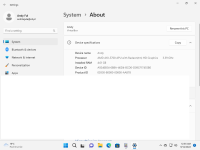That is right but needs clarifying.
Microsoft Defender (not paid) cannot be set to (strict) default-deny on the home computers. One can use Windows built-in MDAC or SRP, but in the strict default-deny mode, they can be used without Microsoft Defender (with any AV).
Smart Application Control is a file reputation feature similar to SmartScreen for Explorer but much more comprehensive. It is similar to KIS in
@harlan4096 settings (Kaspersky uses KSN and SAC uses Microsoft ISG).
Of course, such a feature is useless to detect malware, but most users do not want to detect malware on their computers. They want to use computers safely.
Anyway, SAC in its current form is hardly useful. Even Defender in ConfigureDefender MAX settings is more user-friendly, and as we know, not many MT members decided to enable it.
Edit.
I think that the proper naming for SAC would be probably "allow list" (or smart-default-deny) instead of default-deny.


